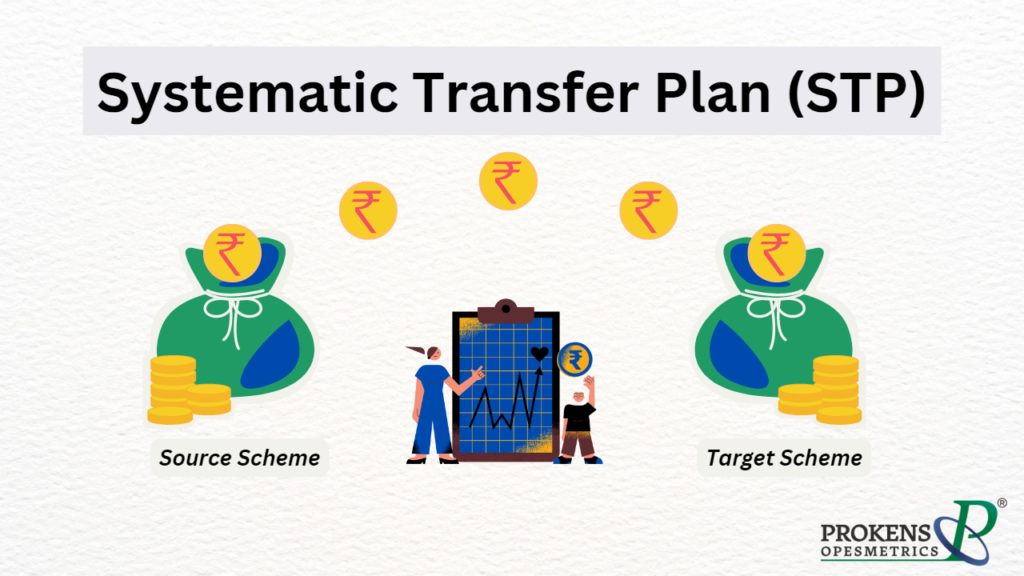What is Systematic Transfer Plan (STP) in Mutual Funds, Benefits and Features of STP.
What is Systematic Transfer Plan (STP) in Mutual Funds, Benefits and Features of STP.

You know that the Systematic Investment Plan is an excellent thing to do when you have a monthly surplus. What if you have a sizeable surplus at once and you wish to invest the surplus into mutual funds? You are always worried about the right time to invest in a scheme. You are also concerned about what if the NAV of the target scheme falls after you invest a lump sum. How long would it take for the NAV to rebound? Can you simulate a SIP even as you have a chunk of money to invest? The answer is YES. A lesser known yet potent process, known as the Systematic Transfer Plan (STP), is offered by all Asset Management Companies.
What is STP?
A Systematic Transfer Plan (STP) is a feature that allows investors to transfer a fixed amount systematically from one mutual fund (source) scheme to another (target) scheme. STP is a disciplined investment strategy that enables investors to rebalance their portfolios, manage risk, and smoothen the cost of acquisition of units of the target scheme. The target scheme usually has high volatility; the source scheme is stable and has low volatility.
Here’s how STP works:
Selection of Mutual Fund Schemes: You select two mutual fund schemes for STP— a source and a target scheme. The source scheme is the fund where you park a lump sum and from which you transfer the funds out, while the target scheme is the fund to which the money is transferred in.
Transfer Frequency and Amount: You decide the transfer frequency (daily, weekly, monthly, quarterly, or annually) that suits your strategy. The installment amount to be transferred periodically is usually fixed.
Initial Investment: You need to make an initial investment in the source scheme. This can be a lump sum or an existing investment.
Transfer Process: At the predetermined frequency, the mutual fund will redeem units from the source scheme and use the proceeds to purchase units in the target scheme. The transfer can be done at a specified date or Net Asset Value (NAV)-based.
It’s Automatic: The processing of systematic transfer from a source to a target scheme is automated using your physical or electronic mandate.
Features of STP
- At least six transfers are mandatory for investors to start an STP in the schemes.
- The exit load is charged on each transfer made depending on the nature of the source scheme. You can avoid paying an exit load if you select a target scheme with no exit load, such as a liquid or money market fund.
- There is no restriction on the maximum investment amount in an STP. However, the minimum investment amount varies from scheme to start of the STP in the source scheme.
- STP can only be done between the different funds managed by a single Asset Management Company (AMC). STP between various schemes of different AMCs cannot be done.
- The STP redemption from the source scheme is taxable, and the investor must know about long-term and short-term capital gain tax before starting an STP.
Benefits of STP
Risk Management: STP helps manage investment risk by gradually moving funds from one scheme to another. For instance, an investor can transfer funds from a debt fund to an equity fund in a systematic manner. This approach reduces the impact of market volatility by averaging the investment price over time.
Flexibility: STP is an intelligent strategy to stagger your investment over a specific term to reduce risks and balance returns. The advantage of STP is the seamless fund transfer, as money is seamlessly adjusted between the funds according to the NAV.
Rupee Cost Averaging: STP facilitates the concept of rupee cost averaging. By investing a fixed amount regularly, investors buy more units when prices are lower and fewer units when prices are higher. This helps reduce the average purchase cost over time and potentially enhances returns.
Asset Allocation: STP can be used as a tool for asset allocation. Investors can start with a lump sum investment in a liquid or debt fund and gradually transfer a fixed amount to equity funds over time. This enables them to maintain a balanced portfolio and aligns their investments with their risk tolerance and long-term goals.
Tax Planning: STP can be employed for tax planning purposes. Investors can optimize their tax liabilities by transferring funds from one scheme to another. For example, an investor can transfer gains from a debt fund to an equity fund, potentially taking advantage of long-term capital gains tax benefits.
Systematic Investing: STP encourages disciplined investing by establishing a regular investment schedule. This helps investors to avoid impulsive investment decisions and emotional reactions to market fluctuations. It promotes a systematic approach to wealth creation.
Convenience: STP offers comfort as it automates the transfer process. Once STP is set up, the transfers occur automatically, reducing the need for continuous monitoring and manual intervention.
Profit Harvesting: STP helps you harvest a scheme’s profit (growth), where you can retain the original capital in the source scheme for future use and transfer only the growth into a target scheme.
Things to know before doing STP in your investments
- Always consider the long-term investment horizon while making an STP investment in a scheme. Even though investments through STPs ensure exposure to lower market risks, there is no guarantee that risk can be eliminated entirely.
- An investor should know about market trends and patterns if STPs are chosen. Understanding the performance of the market value of assets and their fluctuation mechanisms would allow investors to realize a better outcome from allocated funds or contact your mutual fund distributor.
- Exit loads and tax deductions should be considered while calculating expected returns from systematic transfer plans. Security of the principal amount and the value of returns depends upon the performance of the respective Mutual Funds schemes.
- Always keep an eye on the underlying assets and their phases. For instance, transferring capital when the market moves to the peak would be irrational. In short, STP is a helpful strategy to manage risks without affecting your returns significantly.
After knowing about such a flexible process to deploy your lump sum, build your mutual fund corpus without further losing time. Contact us to learn more about investing lump sums using STP.
Tags:
Search
Categories
- Bonds & Fixed Deposits
- Insurance
- Mutual Funds
- "From Temptation to Triumph: A Guide to Smarter Investment Beyond Past Returns in Mutual Fund"
- Debt Mutual Fund
- Equity Mutual Fund
- How to earn good returns
- Liquid Mutual Fund
- Systematic Investment Plan (SIP) in Mutual Fund
- Systematic Transfer Plan (STP) in Mutual Fund
- Systematic Withdrawal Plan (SWP) in Mutual Funds
- Others
- PMS
- Stock Broking





